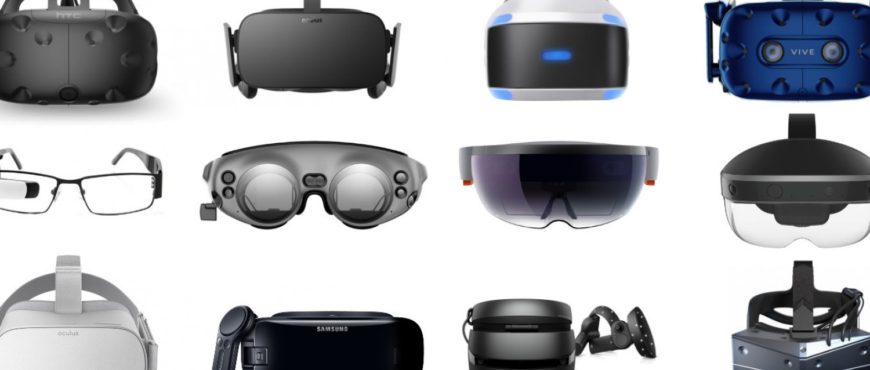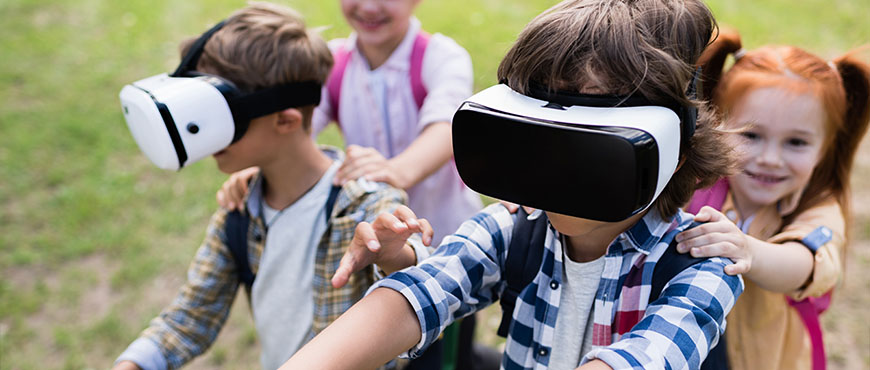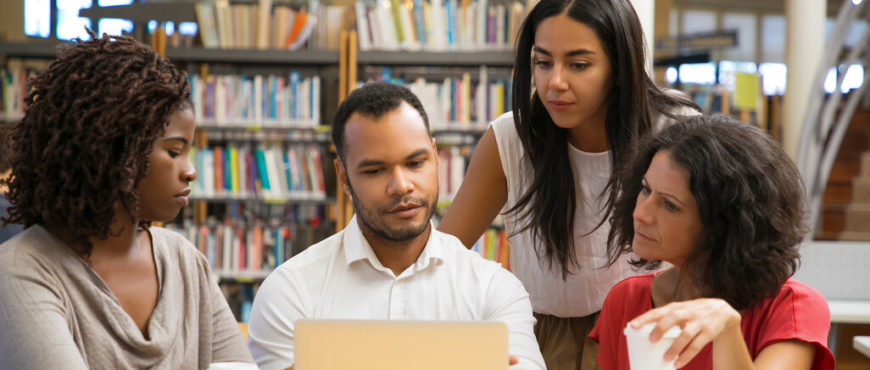I came across this question in various meetings and conversations. Although similar in many ways, the so-called immersive technologies represented by augmented reality (AR), virtual reality (VR) and mixed reality (MR) have important differences in their proposal.
The most famous one is virtual reality. Mostly because of the strong symbolism represented by the use of special glasses to access this technology. On the other hand, the most accessible, scalable and which is expected to become increasingly popular is augmented reality. It requires only a smartphone to access it, current available to 60% of Brazilians and 80% of Europeans. Mixed reality, on the other hand, is the least known and can be considered a mixture of AR and VR and its access is accomplished through a special equipment such as Microsoft’s Hololens glasses.
Let’s understand better these 3 technologies in a more detailed way:

Virtual Reality (VR)
It provides total virtual immersion experience, moving the user from the real world to another totally simulated by computer. It is possible, for example, to see yourself inside a game or take sight tours around the globe without leaving physically a place. At the beginning, its use was greatly represented in game industry. Over time, it has also been used in several other sectors such as health, education, engineering, events and tourism.
The experience takes place through the use of special glasses like Facebook’s Oculus Quest, which works autonomously or by a smartphone compatible equipment such as the Samsung Gear VR. In a quick web search, several VR glasses options are available. For those looking for a more affordable equipment for example, Google Cardboard can be found for just US$ 15 on the internet. The user can manually assemble the cardboard glasses and then attach a cell phone compatible with virtual reality applications.
VR applications are already used in different sectors and for the most diverse purposes. To name a few examples: doctors while preparing for surgical procedures, soldiers in combat simulations, athletes in competition training, children, youth and adults during learning processes, among others.
Augmented Reality (AR)
It became popular all over the world due to the Pokémon GO phenomenon, the most known augmented reality application. Unlike VR, augmented reality is a technology that inserts virtual elements in real environments, such as images, videos, 3D objects, games, external links, etc. Accessible by a smartphone or tablet compatible with AR applications, or even through special glasses which should start reaching the market with more intensity next year. Apple should announce 2021 Apple Glass launch by the end of this year. Technology giants like Google and Facebook should make announcements soon too. Other players will surely emerge not only with glasses offers but also AR contact lenses. It’s been speculated that Apple’s glasses will hit the market at prices starting at $ 500. However, the imminent increase in competition should result in price reduction and thus favor the people’s access to this equipment.
Augmented reality goes far beyond entertainment. It is a very useful resource which generates important positive impacts on strategic indicators. The cosmetics brand L’Oreal launched its TryOn action allowing consumers to virtually try different products. The result: 80% conversion into sales. The retailer chain IKEA has also been very successful launching its IKEA Place app allowing customers to virtually view store products inserted in their homes with 98% accuracy. Companies from diverse sectors are already using AR as an effective tool in sales, production, trainings, among others. Augmented reality technology can enrich travel experiences in different situations, bringing important content and updated in real time on monuments, parks, restaurants, hotels, transportation systems, among others. Information and interactive contents would immediately appear on the traveller’s cell phone screen when aiming its device’s camera with an AR application.
Mixed reality (MR)
A mixed reality environment goes a step beyond augmented reality as users can interact with virtual objects as if they were part of the real world, eliminating the need for a smartphone or tablet screen.
To experience mixed reality, it is necessary to use an MR headset that allows interaction with 3D holograms and recognizes gestures, looks and sounds through motion controllers and MR headphones. The equipment’s processing power for this technology needs to be much greater than that used for virtual or augmented reality due to its greater operational complexity.
As the youngest in the immersive technology family, it is still little known in the market. However, some companies from different sectors and sizes have already invested in mixed reality projects. Ford, for example, already uses MR to create future vehicles prototypes, instead of making real prototypes that are much more expensive and time-consuming to make.
Simply put, the difference between virtual, augmented and mixed reality is:
• Virtual reality (VR): a totally immersive experience in which the user enters a fully digital environment through special VR glasses.
• Augmented reality (AR): an experience in which virtual objects are superimposed on the real world environment and can be viewed and accessed using smartphones, tablets or special AR glasses.
• Mixed reality (MR): allows interaction with 3D holograms in real environments and thus provides users with an immersive experience that mixes the real and the virtual in a fully integrated way.






